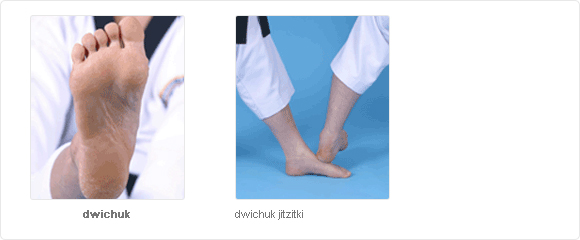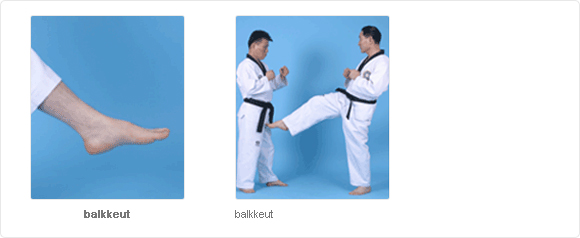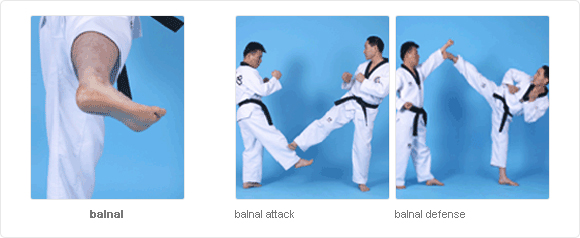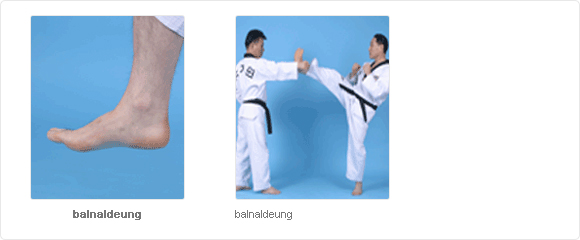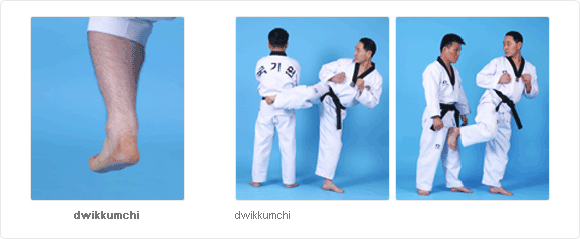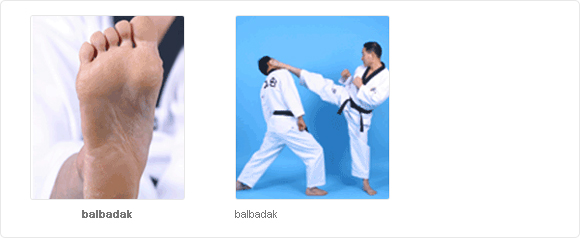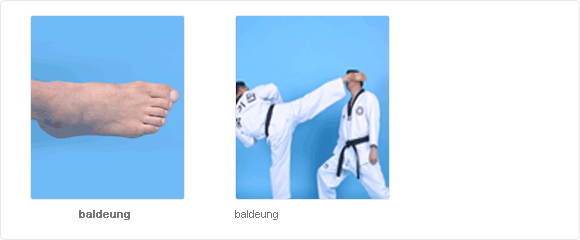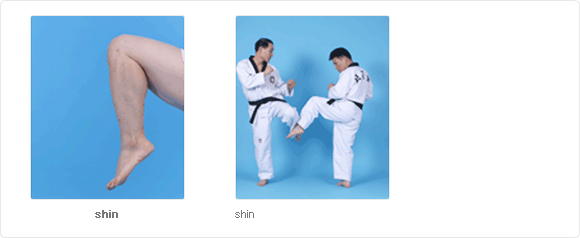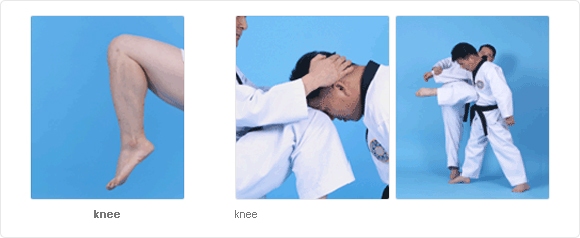The two legs and feet enable a man to keep the balance of the body in standing, moving, turning, lowering and lifting, high and broad jumping, kicking, defending, etc. Also the various parts of the foot sole can be used in may ways as sharp weapons mainly in chagi (kicking) techniques although longer parts are used for defense purposes. The foot techniques are not like the hand or fist techniques in terms of speed, flexibility and accuracy, which naturally requires more training. When one applies a foot techniques, the body has the difficulty to keep itself stabilized on one foot, thus resulting in falling down or failing in an attack. They require a long and hard training to get speedier and better foot techniques. The merits of foot techniques are their stronger power than any other techniques and their capability of delivering attacks at a distance.
Apchuk (fore sole)
1. Applicable part: The foremost part of the sole, i.e., the base of tiptoes when the latters are crooked upward. 2. Usage: When the body turns, the apchuk plays the role of an axis. It is used in ap chagi (front kick), dollyo chagi (turning kick), biteuro chagi (twist kick), and bandal chagi (semilunar kick) techniques, etc. It also plays the role of a brake as the body moves.
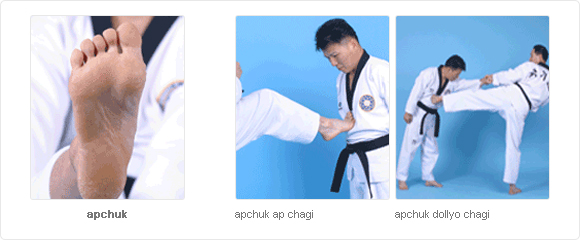
Dwichuk (back sole)
1. Applicable part: The hind part of the sole. 2. Usage: This also plays the role of an axis when the body turns and applies itself in jitzitki (pounding), yop chagi (side kick) and podeo chagi (stretched kick) techniques.
Balkkeut (tiptoes)
1. Applicable part: The end part of toes when they are stretched straight forward. 2. Usage: Balkkeut is applied to a stretched kick with the spring power of the leg swinging from the knee, which is the medium type of chagi between the front kick and the twist kick. This kick principally aims at the opponent’s groin or at the solar plexus, if one becomes more skilled. The kick is performed with the first toe directed upward like the thumb in case of a sewun sonkkeut tzireugi (erect finger tips thrust).
Balnal (foot blade)
1. Applicable part: The outer side between the sole and the foot back, ranging from the outer rim of the heel to the last toe. 2. Usage: It is used in yopchagi (side kick), makki (or chaolligi) and bada chagi (counter kick) techniques.
Balnaldeung (back of the foot blade)
1. Applicable part: The opposite side of foot blade (the inner side of the foot), ranging from the inner heel to the inner side of the fore sole. 2. Usage: This part is wide so it is used in makki, chagi techniques, and mainly in pyojeok chagi (target kick).
Dwikkumchi (heel)
1. Applicable part: The lower part of the heel. 2. Usage: This is used in naeryo chagi (drop kick), momdollyo huryo chagi (body turning thrashing kick), and nakka chagi (hooking kick) techniques.
Balbadak (sole)
1. Applicable part: All over the sole from the back sole to the toes including the fore sole. 2. Usage: This is used in momdollyo huryo chagi and naeryo chagi techniques.
Baldeung (top of the foot)
1. Applicable part: The upper part of the foot, ranging from the ankle to the toes, the foot stretching at the ankle when applied to techniques. 2. Usage: This is used in ollyo chagi, dollyo chagi and huryo chagi techniques.
Jeonggangyi (shin)
The dari rages from the pelvis joint down to the ankle and is applied to makki techniques thanks to its length and solidity, but is also vulneralble to the opponent’s attacks. The shin is used for defense purposes but one feels painful when it collides with the opponent’s kicks. 1. Applicable part: The lower part of the leg, ranging from the ankle to the knee joint in the front. 2. Usage: This is used in makki techniques.
Mureup (knee)
The inflected knee is solid enough to be used in chigi (hit) techniques. It is applied to ollyochigi (lifting hit) techniques. 1. Applicable part: The knee part when the leg is bent. 2. Usage: This is used in ollyochigi, dollyochigi and huryochigi techniques.

